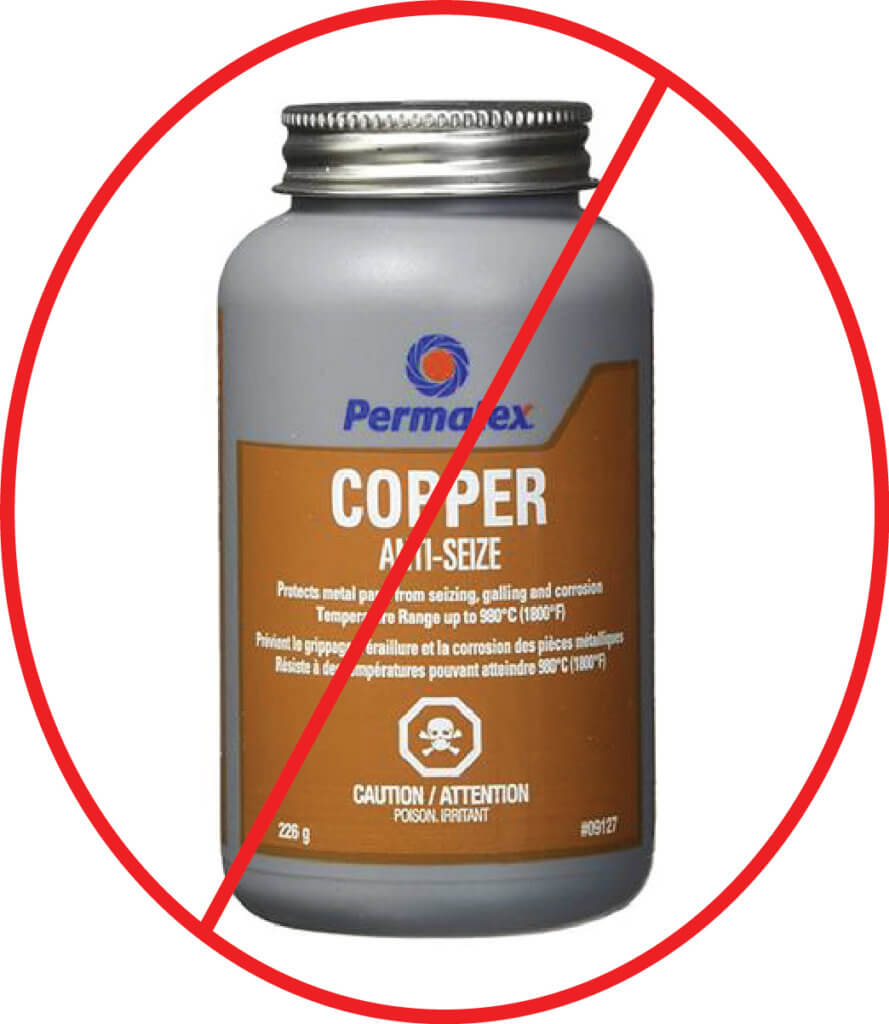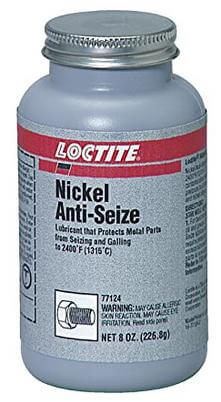Copper anti seize brake grease
Copper anti seize brake grease has limited applications in brake jobs
Copper anti-seize should never be used to lubricate caliper pins
Several youtubers show copper anti seize being used to lubricate caliper slide pins. They’re dead wrong in  recommending anti-seize for brakes. In fact, using anti-seize grease on your brakes can actually cause the problems you’re trying to avoid.
recommending anti-seize for brakes. In fact, using anti-seize grease on your brakes can actually cause the problems you’re trying to avoid.
Here’s why anti-seize grease is the wrong product to use on your brakes:
• Anti-seize is not a lubricant and should never be used to lubricate sliding/rotating parts.
• It’s petroleum based, so it can degrade rubber boots, seals, and O-rings on contact.
• Because of its high metal solids content, copper, aluminum and nickel anti-seize products conduct electricity and actually promote galvanic action, metal transfer, and corrosion. That’s the last thing you want in a brake lubricant.
• Due to the high-solids content it can actually cause caliper slide pins to seize; the exact opposite of what you want in a brake grease.
Copper anti seize can ONLY be used for metal-to-metal contact areas and even then, it’s not the best choice for brakes.
• For caliper slide pins, use a high temperature synthetic brake grease like the ones shown below.
• For use under the anti rattle clips and on the anti rattle clips, use a high temperature synthetic silicone brake grease. You want a dielectric grease so it won’t promote galvanic action like copper anti seize does.
• For use on the face of the caliper piston, use a high temperature synthetic brake grease like the ones listed below
• For use on the noise reduction shims where they contact the outboard caliper fingers, use a moly grease
Use silicone or PAG based brake grease, not anti seize.
Silicone based brake greases are dielectric so they don’t promote galvanic action like metallic anti seize products
High temperature synthetic brake greases are non-petroleum based to prevent damage to rubber boots, seals, and O-rings. High temperature brake greases are either silicone or Polyalkylene Glycol (PAG) based. They are low-solids, so they lubricate sliding parts and excel and dampening vibrations. They’re also dielectric, so they reduce or eliminate galvanic action and corrosion between dissimilar metals.
Where anti-seize can be used
Some carmakers apply nickel anti-seize to the  wheel hub to reduce corrosion that can cause lateral runout and disc thickness variation.
wheel hub to reduce corrosion that can cause lateral runout and disc thickness variation.
Nickel grade is made from nickel (20%) and graphite in a petroleum base. Nickel anti seize excels at protecting metal parts from rust, corrosion, galling and seizing at temperatures up to 2600° F. Nickel Anti-Seize provides excellent chemical and oxidation resistance.
How to use nickel anti-seize on wheel hubs
Remove all wheel hub rust using a wire brush or specialty hub rust removal products. Apply a light film of nickel anti-seize onto the wheel hub, avoiding getting the product on the wheel studs.
©, 2022 Rick Muscoplat
Posted on by Rick Muscoplat
